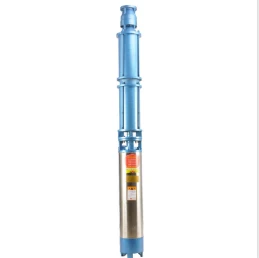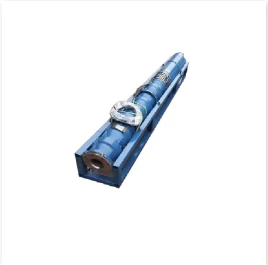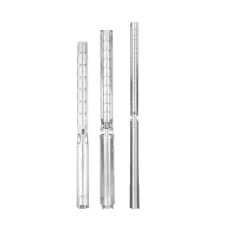ಜುಲೈ . 31, 2024 21:01 Back to list
Exploring the Advantages and Applications of Battery-Powered Submersible Pumps in Various Industries
Battery Submersible Pumps Innovative Solutions for Water Management
In the contemporary landscape of water management and drainage, battery submersible pumps have emerged as a vital tool across various industries and applications. These innovative devices provide a convenient, efficient, and portable solution for moving water where it is needed most, especially in areas lacking reliable power sources. This article delves into the features, advantages, and applications of battery-powered submersible pumps, highlighting their significance in today's world.
Understanding Battery Submersible Pumps
A battery submersible pump is a compact, portable pump designed to operate underwater. Unlike traditional pumps that require a direct electrical supply, these pumps are powered by rechargeable batteries, making them versatile and suitable for use in remote locations or during power outages. They are typically designed to handle a variety of fluids, including clean water, wastewater, and even some corrosive substances, depending on the materials used in their construction.
Advantages of Battery Submersible Pumps
1. Portability One of the primary benefits of battery submersible pumps is their portability. With their battery-operated design, these pumps can be easily transported to remote sites, making them indispensable for construction projects, agricultural applications, or emergency flood response.
2. Ease of Use Battery submersible pumps are often designed for straightforward operation. Many models come with user-friendly controls and lightweight designs, enabling users to set them up quickly and without the need for specialized training.
3. Environmental Friendliness These pumps usually produce minimal noise and emissions during operation. As such, they are often viewed as a more environmentally friendly option, particularly in situations where traditional gas-powered pumps would disturb local ecosystems or communities.
4. Versatility Available in various sizes and capacities, battery submersible pumps can handle a wide range of applications—from draining swimming pools and flooded basements to managing water levels in agricultural fields. This versatility makes them a preferred choice for homeowners and professionals alike.
5. Cost-Efficiency While the initial investment in a quality battery submersible pump may be higher than traditional electric models, the long-term savings can be significant. These pumps often require less maintenance and can reduce reliance on external power sources, leading to decreased operational costs over time.
battery submersible pump

Applications of Battery Submersible Pumps
Battery submersible pumps are used in numerous industries and situations
- Flood Control During heavy rainfall or flooding, these pumps play a crucial role in removing excess water from homes and commercial properties, helping to prevent damage.
- Construction Sites They are frequently employed in construction projects to manage water accumulation, ensuring that sites remain dry and safe for workers.
- Agriculture Farmers utilize these pumps for irrigation purposes or in drainage systems, especially in regions where access to electricity is limited.
- Emergency Services Fire departments and rescue units rely on battery submersible pumps for efficient water removal during emergency situations, such as after natural disasters.
- Residential Use Homeowners often turn to these pumps for tasks like draining pools, aquariums, or flooded basements, underscoring their utility in everyday life.
Conclusion
As technology advances, battery submersible pumps will likely continue to evolve, offering even greater efficiency and battery life. These devices are revolutionizing how water management is conducted, particularly in areas where electricity is scarce. By combining portability, ease of use, and environmental friendliness, battery submersible pumps stand out as an essential resource for anyone needing reliable water movement solutions, reinforcing their place in the contemporary toolkit of both professionals and homeowners.
-
Water Pumps: Solutions for Every Need
NewsJul.30,2025
-
Submersible Well Pumps: Reliable Water Solutions
NewsJul.30,2025
-
Stainless Steel Water Pumps: Quality and Durability
NewsJul.30,2025
-
Powerful Water Pumps: Your Solution for Efficient Water Management
NewsJul.30,2025
-
Oil vs Water Filled Submersible Pumps: Which is Better?
NewsJul.30,2025
-
Deep Well Pumps: Power and Reliability
NewsJul.30,2025
-
 Water Pumps: Solutions for Every NeedWhen it comes to handling dirty water, the dirty water pump is a must-have.Detail
Water Pumps: Solutions for Every NeedWhen it comes to handling dirty water, the dirty water pump is a must-have.Detail -
 Submersible Well Pumps: Reliable Water SolutionsWhen it comes to ensuring a reliable water supply, submersible well pumps are a top choice.Detail
Submersible Well Pumps: Reliable Water SolutionsWhen it comes to ensuring a reliable water supply, submersible well pumps are a top choice.Detail -
 Stainless Steel Water Pumps: Quality and DurabilityWhen it comes to choosing a water pump, the stainless steel water pump price is a crucial factor.Detail
Stainless Steel Water Pumps: Quality and DurabilityWhen it comes to choosing a water pump, the stainless steel water pump price is a crucial factor.Detail
